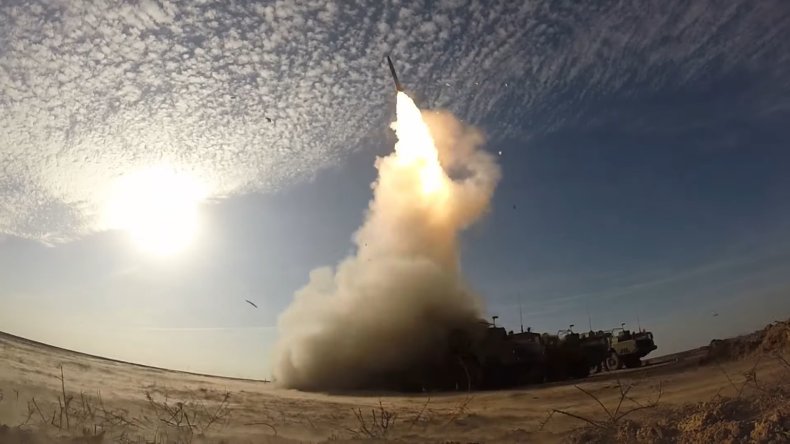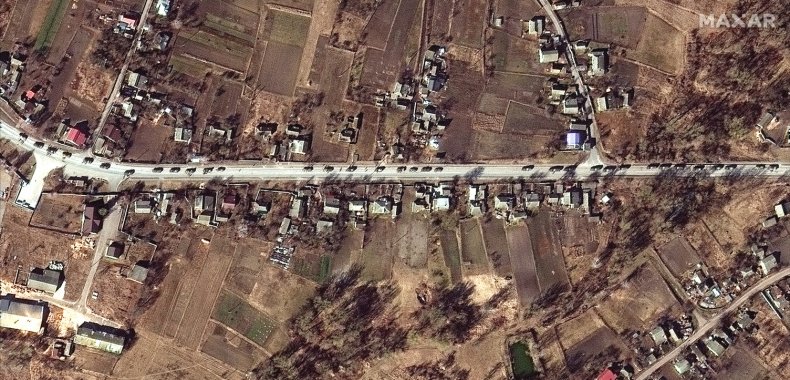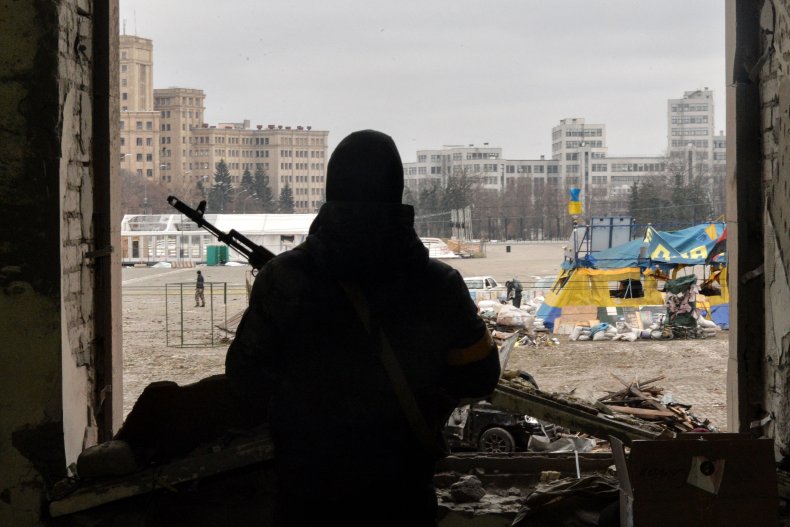Russia has established effective dominance over Ukraine’s skies, leaving little room for other Kyiv warplanes to operate, even as Moscow sends an apparently stranded, vulnerable convoy of ground reinforcements, military-experienced aviators told Newsweek.
“They are essentially grounded. If they fly, they die,” Ward Carroll, a retired commander of the US Navy who was conducting F-14 combat missions for the Ukrainian Air Force, told Newsweek.
Given Russia’s enormous air power, an asset that Moscow appears to be using more and more as the war enters its second week, Carol, an author who also hosts a YouTube channel discussing military issues, said everyone flights performed by Ukrainian aircraft at this stage of the conflict “would be the last mission.”
“That’s why,” he said, “the idea of just sending more planes like the MiG-29 is controversial at the moment.” He said that “Ukrainians can fly for short flights, quick strikes and then back on deck and hide planes.”
The situation is such that Russia is asserting effective control over an altitude of 10,000 feet, and Carol notes that “he who has dominance over 10K has superiority in the air.” And this “does not mean that the Ukrainians own and below that,” he said.
Ukraine still retains some of its anti-aircraft capabilities, including in the form of shoulder-launched Stinger missiles provided by the United States. But the threat from these platforms is largely limited to “attack helicopters and transport planes trying to land,” Carol said.
“Once you have the sky above 10K, you can control the threat of surface-to-air missiles when it arises,” he added.
The situation severely limits Ukraine’s ability to hit even potentially enticing targets, such as a sprawling Russian convoy about 40 miles northwest of Kyiv.
As long as Ukraine fails to achieve “superiority or parity in the air,” a military fighter with experience in theater planning told Newsweek, “Russian ground forces can achieve freedom of movement with impunity. A 40-mile convoy to invade the open road. “

Russian S-400 missile system fires into the sky during the Kapustin Yar test site in footage published on October 20, 2020. Russia’s Ministry of Defense
Part of Russia’s advantage lies in its own state-of-the-art defense, including the S-400 surface-to-air missile system, known to NATO as the SA-21 and capable of hitting targets within a range of 400 kilometers, or about 250 miles.
The fighter said that these systems, present not only in Russia itself but also in allied Belarus and the Crimean peninsula, annexed by Ukraine after a disputed international referendum, had been “pushed to the border”, placing much of Ukraine’s airspace in range.
“The scope of the threat from S-400 and SA-21 surface-to-air missiles is virtually across Ukraine from the border,” said the fighter, who asked not to be named.
And as Russia has focused not only on airport and anti-aircraft equipment, but also on radar targets in the first volley last week and subsequent strikes on Ukraine, Kyiv’s visibility is likely to be limited as well.
As such, the combat pilot confirmed Carol’s account, saying that the Ukrainian air missions were probably “very short: takeoff, strike target, landing before the Russians could react.”
“If the Ukrainians manage to achieve parity in the air in just a few minutes through a cyber or other unconventional attack on Russian air defense systems, then they could destroy this column,” the fighter said.
There have been reports of limited Ukrainian air strikes on the convoy. In an interview with the Military Times on Wednesday, Ukrainian Brigadier General Kirilo Budanov said Ukrainian Su-24 and Su-25 fighters were “hitting enemy columns”.
However, the information could not be verified independently, and the Pentagon also declined to comment in depth.
“We have no reason to doubt the allegations of the Ukrainians that they attacked this convoy in places and helped delay it. There is no reason to doubt that,” a senior Pentagon official told reporters on Thursday. “How they did it, I think they can talk and they need to talk to it.”
As for whether drones such as TB2 Bayraktars provided to Ukraine by NATO member Turkey may have been involved, a senior Pentagon official said: “We will not want to release a lot of information there in the information space it does for Ukrainians. it’s harder to defend your country. “
What seems certain, however, is that the convoy has not moved significantly for days. Speculation, backed in part by Pentagon officials, points to a number of potential factors, including logistical failures and even muddy roads.
As for the skies over it, a senior Pentagon official went on to describe Ukraine’s airspace as “contested.”
“We believe that Ukraine’s air and missile defense systems remain intact and remain effective,” said a senior Pentagon official. “They continue to be able to fly their planes and use air defenses. And this morning we have already counted more than 480 launches of Russian missiles, again, of all sizes and strengths.
And a senior Pentagon official attributed this to a number of factors, including “creative” use of Ukrainian assets, as well as “some indications of misuse of Russian resources and, in some cases, risk of disaster.”
In addition, Pentagon spokesman Marine Lt. Col. Anton Semelrot told Newsweek that he had “nothing to offer in terms of intelligence assessments.”

Satellite images from February 28 show a military convoy southwest of Chernihiv, Ukraine. SATELLITE IMAGE © 2022 MAXAR TECHNOLOGIES
Yet the Russian convoy, which threatens to bring in significant personnel and firepower in support of Moscow’s attempts to take Kyiv, remains largely untouched.
Part of this may be rooted in Russia’s own e-war capabilities, an area in which Moscow is investing heavily but remains largely invisible on the battlefield. In the event that Russia launches its electric arsenal, then even if Ukraine has more modern surviving defense systems such as its predecessor, the S-400, the S-300, they may be of little use.
“If Russia can suppress these systems by keeping planes on the ground and suppressing electronic warfare on missile radars and tracking, then it can still have air superiority,” a U.S. military officer on combat missions with tactical aircraft told Newsweek. .
The military officer pointed out two possible reasons why Russia’s reinforcements lie in the open, mostly unharmed. One is that the Russian forces “enjoy air superiority (or think they do)” and the other is that “Ukraine does not have enough systems to guide and kill convoys.”
One way or another, the military officer said Russian forces “do not feel threatened.”
And while that has changed, the military officer said Moscow’s convoy could be “a super juicy target looking down from the sky,” but the Ukrainian military is largely “unable to do anything about it.”

View of the square in front of the damaged local town hall of Kharkiv on March 1, destroyed as a result of shelling by Russian troops. SERGEY BOBOK / AFP / Getty Images
